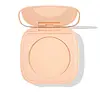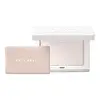What's inside
What's inside
 Key Ingredients
Key Ingredients

 Benefits
Benefits

 Concerns
Concerns

 Ingredients Side-by-side
Ingredients Side-by-side

Talc
AbrasiveHdi/Trimethylol Hexyllactone Crosspolymer
Boron Nitride
AbsorbentMagnesium Myristate
Polydiethylsiloxane
EmollientSynthetic Fluorphlogopite
Silica
AbrasivePhenoxyethanol
PreservativeCaprylyl Glycol
EmollientEthylhexylglycerin
Skin ConditioningHexylene Glycol
EmulsifyingPropylene Glycol Dicaprate
EmollientHelianthus Annuus Seed Extract
Skin ConditioningHordeum Vulgare Extract
EmollientCucumis Sativus Fruit Extract
EmollientTriethoxycaprylylsilane
CI 77491
Cosmetic ColorantCI 77492
Cosmetic ColorantCI 77499
Cosmetic ColorantMica
Cosmetic ColorantCI 77891
Cosmetic ColorantTalc, Hdi/Trimethylol Hexyllactone Crosspolymer, Boron Nitride, Magnesium Myristate, Polydiethylsiloxane, Synthetic Fluorphlogopite, Silica, Phenoxyethanol, Caprylyl Glycol, Ethylhexylglycerin, Hexylene Glycol, Propylene Glycol Dicaprate, Helianthus Annuus Seed Extract, Hordeum Vulgare Extract, Cucumis Sativus Fruit Extract, Triethoxycaprylylsilane, CI 77491, CI 77492, CI 77499, Mica, CI 77891
Synthetic Fluorphlogopite
CI 77220
Cosmetic ColorantMagnesium Myristate
Hdi/Trimethylol Hexyllactone Crosspolymer
Octyldodecyl Stearoyl Stearate
EmollientPolymethylsilsesquioxane
Squalane
EmollientMica
Cosmetic ColorantCoconut Acid
Cleansing1,2-Hexanediol
Skin ConditioningCaprylyl Glycol
EmollientSilica
AbrasiveSalvia Hispanica Seed Extract
EmollientLeuconostoc/Radish Root Ferment Filtrate
AntimicrobialPhenoxyethanol
PreservativeSodium Hyaluronate
HumectantCI 77742
Cosmetic ColorantCI 77492
Cosmetic ColorantSynthetic Fluorphlogopite, CI 77220, Magnesium Myristate, Hdi/Trimethylol Hexyllactone Crosspolymer, Octyldodecyl Stearoyl Stearate, Polymethylsilsesquioxane, Squalane, Mica, Coconut Acid, 1,2-Hexanediol, Caprylyl Glycol, Silica, Salvia Hispanica Seed Extract, Leuconostoc/Radish Root Ferment Filtrate, Phenoxyethanol, Sodium Hyaluronate, CI 77742, CI 77492
 Reviews
Reviews

Ingredients Explained
These ingredients are found in both products.
Ingredients higher up in an ingredient list are typically present in a larger amount.
Caprylyl Glycol is a humectant and emollient, meaning it attracts and preserves moisture.
It is a common ingredient in many products, especially those designed to hydrate skin. The primary benefits are retaining moisture, skin softening, and promoting a healthy skin barrier.
Though Caprylyl Glycol is an alcohol derived from fatty acids, it is not the kind that can dry out skin.
This ingredient is also used as a preservative to extend the life of products. It has slight antimicrobial properties.
Learn more about Caprylyl GlycolCi 77492 is also hydrated iron III oxide. It's sole purpose is to give a yellow hue to products.
Iron III oxides are classified as inorganic chemicals for coloring.
Synthetically created Ci 77492 is considered safer than those naturally found. This is because the synthetically created version may contain less impurities. Iron oxides are generally non-toxic and non-allergenic.
Learn more about CI 77492This ingredient is a powder used to improve texture, slip, and give products a silky texture.
We don't have a description for Magnesium Myristate yet.
Mica is a naturally occurring mineral used to add shimmer and color in cosmetics. It can also help improve the texture of a product or give it an opaque, white/silver color.
Serecite is the name for very fine but ragged grains of mica.
This ingredient is often coated with metal oxides like titanium dioxide. Trace amounts of heavy metals may be found in mica, but these metals are not harmful in our personal products.
Mica has been used since prehistoric times throughout the world. Ancient Egyptian, Indian, Greek, Roman, Aztec, and Chinese civilizations have used mica.
Learn more about MicaPhenoxyethanol is a preservative that has germicide, antimicrobial, and aromatic properties. Studies show that phenoxyethanol can prevent microbial growth. By itself, it has a scent that is similar to that of a rose.
It's often used in formulations along with Caprylyl Glycol to preserve the shelf life of products.
Silica, also known as silicon dioxide, is a naturally occurring mineral. It is used as a fine, spherical, and porous powder in cosmetics.
Though it has exfoliant properties, the function of silica varies depending on the product.
The unique structure of silica enhances the spreadability and adds smoothness, making it a great texture enhancer.
It is also used as an active carrier, emulsifier, and mattifier due to its ability to absorb excess oil.
In some products, tiny microneedles called spicules are made from silica or hydrolyzed sponge. When you rub them in, they lightly polish away dead skin layers and enhance the penetration of active ingredients.
Learn more about SilicaSynthetic Fluorphlogopite is the synthethic version of mica. It consists of fluorine, aluminum and silicate.
Synthetic Fluorphlogopite is used to add volume to products.
It is considered non-irritating on the skin.
Learn more about Synthetic Fluorphlogopite